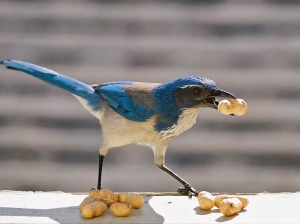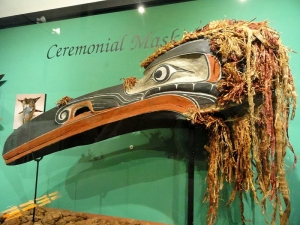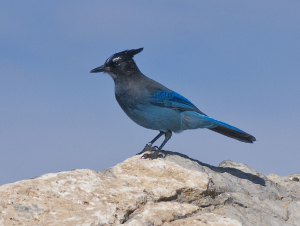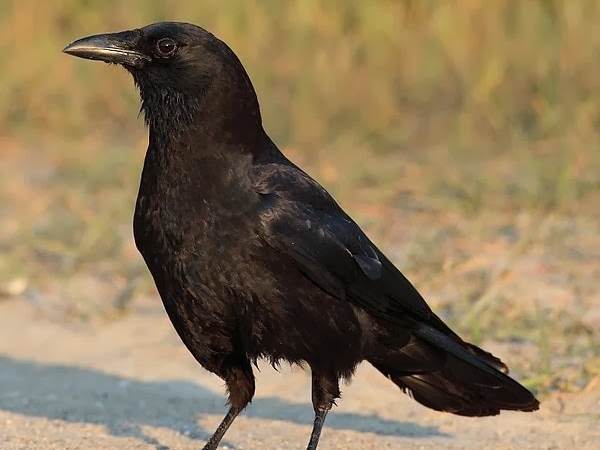Well, happy holidays, friends, family and fellow naturephreaks! I hope that you had a good one, and got out on a hike or two in this beautiful, bright winter weather we’ve been having.
Good friend and gifted birder David send us a link to the video below, and you might want to take two minutes and watch it, because it’s pretty astonishing. It’s a Russian carrion crow (Corvus corone) tobogganing down a snowy rooftop on a plastic lid he has found. I’m not making this up. He does it repeatedly, carrying it up the slope each time for the next run. I have known for a long time that crows are pretty clever, but this one absolutely blew me away, and I decided it was finally time to write an article about corvids.
Corvids (family corvidae) are, roughly speaking, the crows, ravens, magpies and jays, and they are an amazing family of birds. As I’ve mentioned in a couple of other articles, the owls, our favorite symbol of wisdom, are actually one of the stupider birds. The corvids are the brilliant ones. They are the innovators, the problem solvers, the ones who can adapt to anything and handle change at a pace few other creatures besides us can. And the cool thing is that they’re all around us. You don’t need to go anywhere at all to see a corvid, and if you pay attention, you’ll see that intelligence shining through.
The stories abound, and I’m going to entertain you with a few of them, but then I’ll look a little deeper, into the reasons that corvids are the amazing birds they are.

-
Western Scrub Jay (Alphelocoma californica)
By Ingrid Taylar,[CC BY 2.0]I’m a cubicle inmate now but I used to have an actual office with an actual window, and one day on a whim I brought in a bag of peanuts and set a few out on the windowsill. Within two days I had scrub jays (Aphelocoma californica) taking peanuts out of my hand. Within a week I had trained them to tap on the glass with their beaks to get my attention, because back then I was young and ambitious and there would be the odd moment when I was absorbed in my work.
Our friend Marty was driving behind another car once on a stretch of country road where ground squirrels were working the dirt shoulder, and he saw a crow positioned on a fence post ahead, right above a foraging ground squirrel. The crow waited until the car in front of Marty was upon them, then he dive-bombed the ground squirrel, startling him out into the path of the car. Thump-thump. Dinnertime. It could have been coincidence, but I have no problem believing it was intentional. After all, crows have been documented herding sparrows into glass walls to stun them.
If you hang a piece of meat from a perch on a string, a common raven (Corvus corax) will figure out how to pull it up bit by bit, stepping on the string in between so it doesn’t drop back down. They steal the fish off the lines of ice fishermen the same way if they’re left unattended.
In the city of Sendai in Japan, carrion crows (Corvus corax ) fly into intersections when the light is red and put walnuts in the paths of car tires, to get them crushed. They started doing this in the 1990’s, and the behavior is expanding into other regions, because crows share information socially, so what they learn moves outward through the populations and also downward through the generations, and that, it can be argued, could be called culture. Culture among animals is controversial. It’s one of those things like tool use, which we would really like to believe is ours exclusively. But this writer believes that the news is bad, and we’re not as special as we think.
Crows are widely reported to hold funerals. They stand around a dead flock mate—in silence.
Crows and ravens play. Play can be defined as structured behavior that brings no material benefit to the animal, and people as auspicious as Sigmund Freud and Carl Jung spent a lot of research time trying to prove that it is exclusively human. They failed. Obviously they’d never seen a tobogganing crow (or raised a kitten). Crows will break off a twig to just the right size and play with it socially in groups (by the way, that also constitutes tool-making), and ravens will even play across species—the ones up north enjoy playing catch-me-if-you-can with wolves, diving at them and veering away just as the jaws snap, for no practical reason anyone has been able to figure out. The ravens up there will also lead wolves to a dead animal whose hide is too tough for them to break, so that the wolves will open up the carcass for them, which is a behavior that wildlife scientists call manipulation.
Ravens display an ability in communication called displacement, which is the ability to communicate about something which is displaced in space or time—that is, something which is not here, or which is not here now. This seems commonplace to us but there are only four groups of animals who can do it: Us, ants, bees, and the common raven. It was a foundational development in the evolution of human language. Here’s one way the ravens use it: ravens mate for life and the pairs are pretty solitary and defend a territory, but the unmarried ones flock, and when one of them finds a nice carrion kill in an area defended by a mated pair, he’ll go back to the roost and muster enough buddies to return, often the next day, and drive the pair away so they can eat. It’s a behavior called recruitment, and ants do it too, when a dead bug is too big to drag.
Ravens cache their food items one at a time all over the landscape (it’s called scatter hoarding) and can remember dozens of locations, and they rob each other blind, shamelessly pilfering one another’s goodies. A raven will fly a long way to cache something somewhere safe. Others will inconspicuously watch, remember, and return later when the owner is not around. Sometimes a raven will pretend to cache something, then fly off and cache it somewhere else, which proves that they are capable of deception.

-
Ravens are huge in Native American folklore and creation mythology
By Daderot (Daderot) [CC0 or CC0], via Wikimedia Commons
Ravens have been famous for this kind of stuff for thousands of years. They have a huge presence in folklore and creation mythology, going back at least to the Paleolithic (fifteen to thirty thousand years ago), and are always showing up in Native American stories as clowns, tricksters and mischief makers. The Bella Bella people of coastal British Columbia believe that Raven created the world for his own amusement, and considered human beings to be the most amusing animals of them all. Then, for his own amusement, he made all the rivers run only one way, to make it more difficult for us to get around, which I personally think was just plain unkind, but at any rate, now I know who to thank for all those car shuttles I have to set up any time I run a river.

-
Steller’s jay (Cyanocitta stelleri)
By John Fowler, [CC BY 2.0], via Wikimedia Commons
Some corvids are gifted mimics, and use the talent in very clever ways. A Steller’s jay (Cyanocitta stelleri—another corvid you don’t have to go far to see) can mimic perfectly the beautiful, haunting cry of a red-tailed hawk. I swear they even throw a little reverb on it so that it sounds like it’s ringing down from on high. A naturalist friend of ours knows of a stand of trees in Point Reyes in central California where robins stop off on their migration. At some times of the year there will be ten thousand robins in this grove, and it just ticks off the local Steller’s jays. So now and then one of them will do a fly-over and let loose a red-tailed hawk cry, and ten thousand robins will rise into the air in a panic.
I was backpacking with my nephews once in Yosemite when I heard the sound. “Hear that, boys?” said Wise Ranger Randy. “That’s a red-tailed hawk!”
“Um, Randy…” my brother Byron said out of the side of his mouth, and pointed discretely to a Steller’s jay in a bush twenty feet away. Damn. Nailed by the oldest one in the book.
* * * *
At the University of Washington some years ago, Dr. John Marzluff was trying to convince his friends and colleagues that he wasn’t crazy. He was being attacked and harassed by crows far more than anyone else on campus. Even when he was walking in a group, they would attack him and not the people next to him. The reason this interested him was that he was an ornithologist, and in fact he studied crows, which meant that he spent a lot of time trapping and banding the crows on campus, and climbing up to their nests to band the chicks. Dr. Marzluff was absolutely convinced that they were recognizing him as an individual, though birds are not supposed to be able to do that. What he didn’t know was how they were doing it. Was it his face? His gait? His hair color? His fashion sense? He did what any scientist would do, and conducted a study.
He went to a dime store and bought two masks, one of a caveman, and one of Dick Cheney. He started wearing the caveman mask whenever he was doing his crow work. After a while, he started getting attacked any time he wore his caveman mask around campus. When he wore his Dick Cheney mask he would not (though it turned a few students’ heads). When he put the caveman mask on a student and made him walk across campus, the student got attacked (research assistants live tough lives). He tried wearing the caveman mask upside-down. An approaching crow would roll over slightly in flight and cock his head, checking out the upside-down visage. Then he would attack him.
* * * *
It was amazing news to the scientific community that crows can recognize faces, but they can probably do it because they live with humans, and when you live with humans, quite literally one will feed you and the next will kill you. And that takes us to the most fascinating part of this yarn, which is the shared history of crows and human beings. Crows, and probably other corvids as well, have been co-habiting with humans since before we were humans, probably for over eight million years. And since our intellects didn’t begin their spectacular ascent until about two million years ago, for several million years while crows shared our hunting grounds and encampments with us, our wits were about evenly matched. Really we co-evolved with crows. And when our intellects did begin their climb toward humanness, and we began to evolve culturally at a rate far outstripping the glacial pace of genetic evolution, crows had to keep up, and they began to evolve culturally as well, by sharing and handing down information. When we started building cities, they came with us. When we invented guns, they moved into the cities in bigger numbers, because guns are not allowed in cities. As our inventions changed the landscapes and the ways we lived, the crows adapted, and handed down the tricks to their children. As author John Marzluff says in his wonderful book, In the Company of Crows and Ravens, the more unpredictable we became, the smarter crows had to become.
So that’s the thing: Our journeys are intertwined. When you look at a crow, you are looking at a creature who goes way back with you. You are looking at a creature whose ancestor shared a campsite with your ancestor—and had him outwitted a lot of the time. You are looking at a creature who, just like us, survived the most harrowing passages of his evolutionary journey by using his wits—by innovating, and learning, and cooperating, and then teaching it all to his children.
Now you know.
Copyright © 2013 Randy Fry

